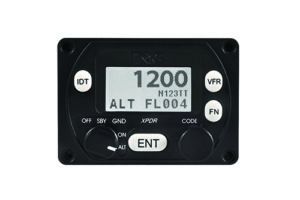In aircraft with limited panel space—maybe small aerobats, motorgliders or ultralights—equipping for the ADS-B mandate could be a challenge. Scotland-based Trig Avionics has that market covered with a line of compact avionics, including 1090ES ADS-B transponders. But to comply with the mandate, those transponders (and third-party ADS-B 1090ES models not equipped with internal GPS) need connection to an approved position source. The TN70 WAAS receiver is one option.

The TN70 remote receiver is a GPS/SBAS/WAAS engine that’s approved via TSO-C145c, which meets the 2020 ADS-B mandate spec, and there’s an STC for interfacing it with the BendixKing KT74. It comes with the companion Trig TA70 external WAAS antenna, which is TSO-C190 certified.
The TN70 is compact and measures 1.6 by 4.1 by 6.5 inches and weighs 1.06 pounds, making it good for mounting in tight spaces.
And for tight panels that can’t accommodate a rack-mounted transponder, Trig sells the TT22. This is a two-piece Mode S ADS-B model that has TSO approval and a 250-watt output. The transponder’s control head fits a 2 1/4-inch instrument cutout and the entire system weighs 16 ounces. With the rear connector, the control head is 3.5 inches deep.
The TT22 also has a built-in altitude encoder, a backlit LCD display and the control head is splashproof, making it a player for open cockpit seaplanes and ultralights. No electrics? The unit can run off an external battery.
If you have an LSA or experimental, Trig sells the TN72 GPS receiver and it packages it with the TT22 for $2999, shown below. You can also buy the TN72 by itself for $399. The certified TN70/TA70 WAAS receiver/antenna is street-priced at $1995.
Visit www.trigavionics.com.





